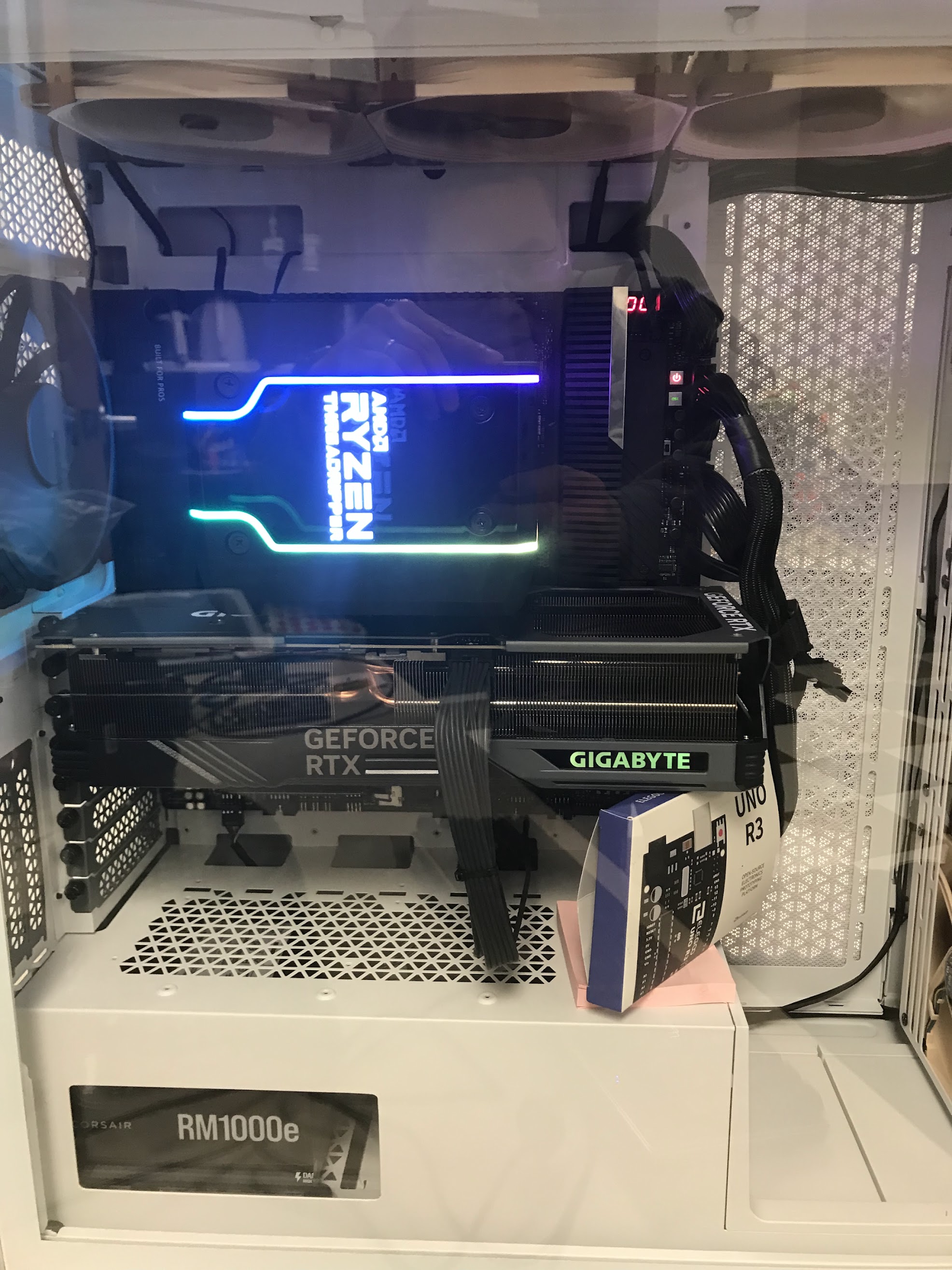Servers - dynaroars/dynaroars.github.io GitHub Wiki
🖥️ Servers for Dynaroars Lab
Server Specs
Our ROARS lab has four servers (pictures).
-
:bubble_tea: Boba
- NVIDIA DGX Spark
- CPU: NVidia GB10 Chip, 20 core Arm (10 Cortex-X925 + 10 Cortex-A725 Arm)
- Unified Memory/Graphic: 128GB RAM
- OS: NVIDIA DGX OS (based on Ubuntu LTS)
This system is ideal for AI-based projects, e.g., generative LLMs
-
:pizza: Pizza
- Custom built
- CPU: 32 cores, 64 threads, 3.6GHz (AMD Ryzen Threadripper PRO 5975WX)
- Graphic: 2x Nvidia RTX 4090 24GB RAM
- Memory: 128GB RAM
- OS: Debian Stable
This system is ideal for projects that can leverage many cores and specialized GPU.
- Custom built
-
:sushi: Sushi
- Lenovo ThinkStation P620
- CPU: 64 cores, 128 threads, 4.3GHz (AMD Ryzen Threadripper PRO 3995WX)
- Graphic: Nvidia RTX 5090 RTX 24GB RAM
- Memory: 128GB RAM
- OS: Debian Stable
This system is ideal for projects that can leverage many cores and specialized GPU.
- Lenovo ThinkStation P620
-
:taco: Taco
- Alienware Aurora
- CPU: 16 cores, 24 threads, 5.20GHz (Intel 12th Gen Core i9-12900KF)
- Graphic: Nvidia RTX 3080 Ti 12GB RAM
- Memory: 64GB RAM
- OS: Debian Stable
This system is ideal for experiments that need fast CPU (but not lots of core) and fast GPU.
- Alienware Aurora
⚠️ For Debian machines, DO NOT install any thing other than Debian stable packages to these computers (e.g., do not mix unstable or new repositories to
aptsources list). You can download and install anything in your home (local) directory. If in doubt, contact us.
Getting an account
- To get an account on the server, send a request and your SSH public key (for password-less log in)
Miscs
- You can use an IDE such as
VSCodeto do remote development on these servers (just connect to the server via the builtin remote login method in VSCode). You can also use other editors that support remote development (e.g.,Emac+TRAMP). - Do take advantage of the multicores these machine have. Most programming languages support multiprocessing (e.g.,
Python) and can significantly reduce program runtime. - Periodically check
topandhtopto make sure you are not taking too much CPU or memory. - Periodically check
/var/tmpor/tmp/to make sure you are not taking too much space there.
Pictures
 :sushi: Sushi
:sushi: Sushi
 :sushi: Sushi Cooling System
:sushi: Sushi Cooling System
 :pizza: Pizza
:pizza: Pizza
 :bubble_tea: Boba
:bubble_tea: Boba